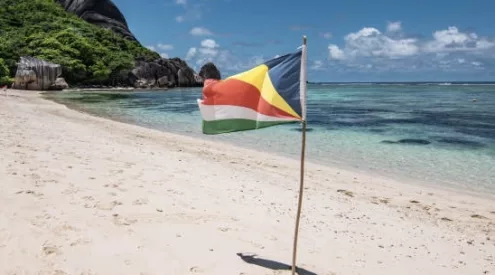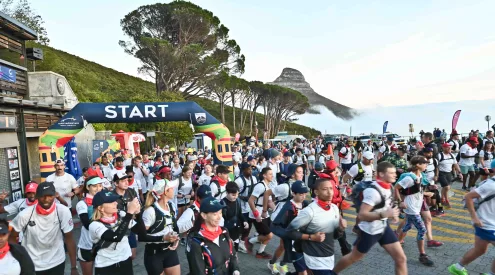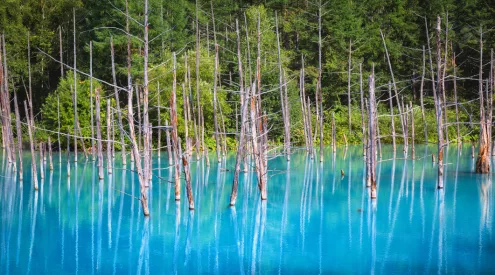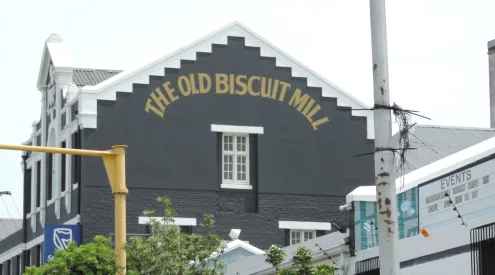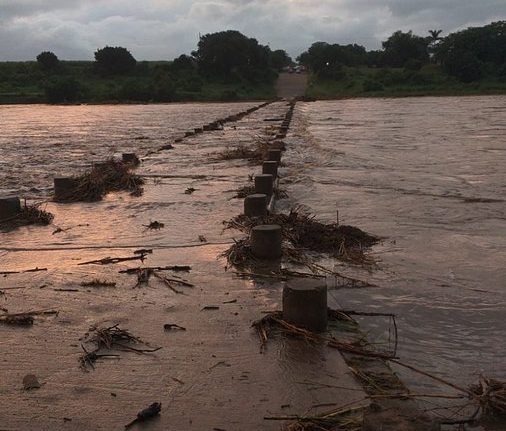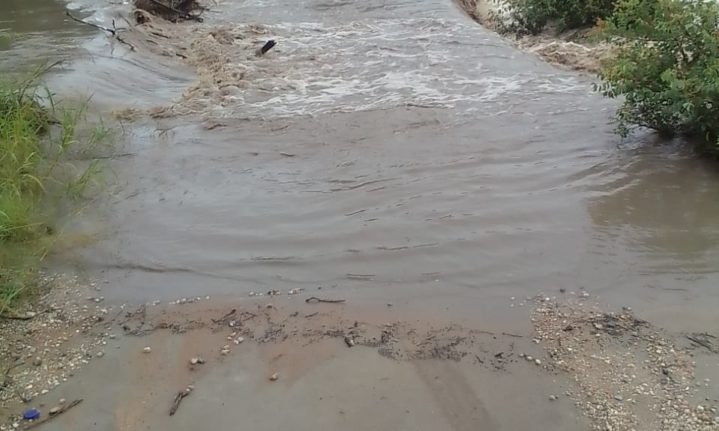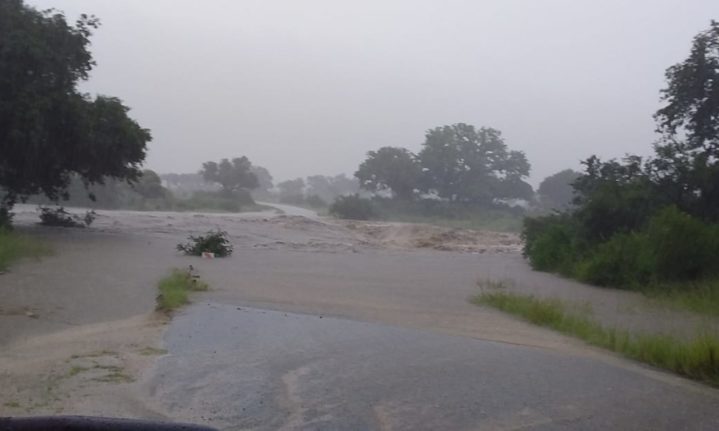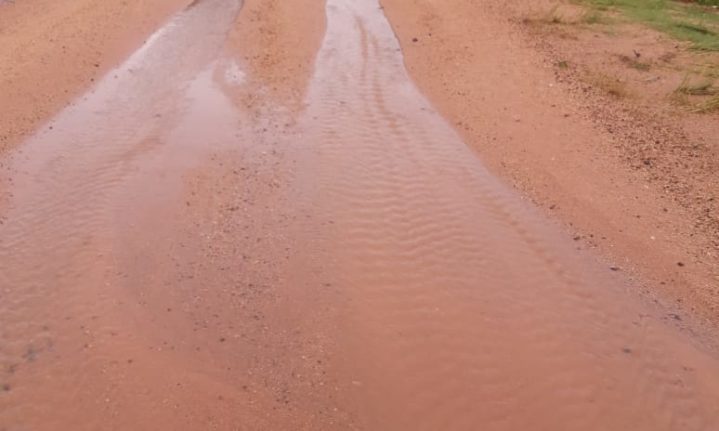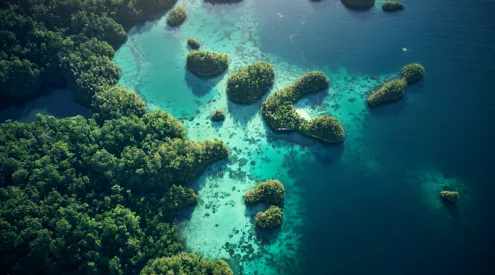The Kruger National Park has been overwhelmed with torrential downpours. Starting with Tropical Storm Eloise, the park was left inundated with flooded rivers, closed gates and inaccessible dirt roads.
In the south of Kruger, Crocodile River, Sabie River and the Sand River were left gushing. Crocodile Bridge was completely submerged several times. Guests were diverted to Malelane Gate to access the Park.
Technical services were sent to inspect the bridge and road to ensure the integrity of the structure.
Isaac Phaahla, General Manager of Communications and Marketing of the Kruger National Park spoke with Getaway Magazine and said that between Pretoriuskop and other Southern-based camps, approximately 220mm of rain was received.
In the north, the rainfall was recorded at around 300mm.
All the entrance gates into the Kruger National Park are currently open as the water has begun to subside.
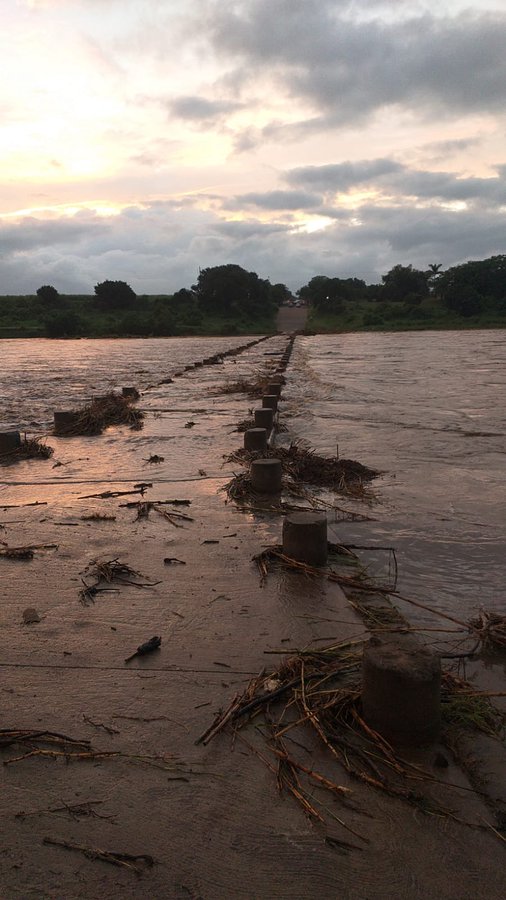
Crocodile Bridge on February 6. Image: SANParks
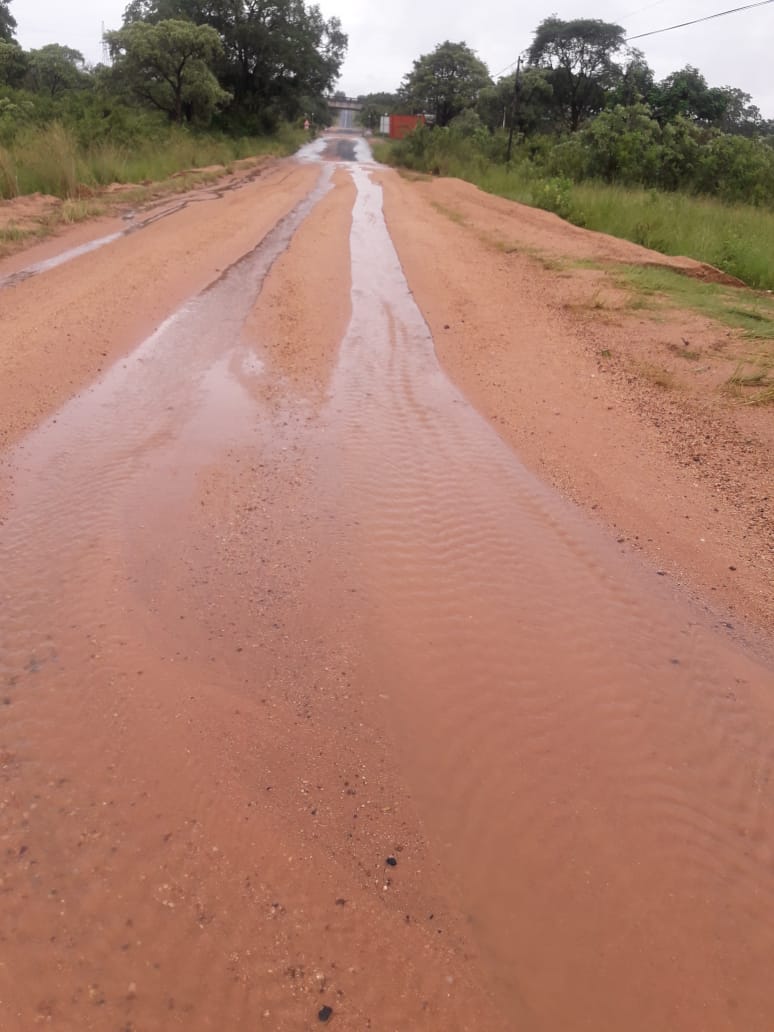
Numbi Gate, the southwestern entrance of the park, closed due to flooding on Feb 7
In the northern parts of Kruger, Pafuri and other camps received some 300mm of rain in total, explained Phaahla. The north was affected the most by the rains.
On January 24 the following rainfall was recorded:
- Pafuri: Mabiligwe 77.5mm;
- Outpost 100mm;
- Eco training 100mm;
- Pafuri 80mm;
- Mooiplaas is 66.0mm; and
- Mah 56.0mm.
The bridge to Sirheni washed away entirely, the Pioneer Dam flooded and the Mopani to Phalaborwa road closed. All gravel roads and H13-1 tar road in Nxanatseni were closed and the Tsendze Bridge on the H14 was submerged.
‘The KNP disaster teams were prepared with this storm and managed to evacuate in time to avoid any loss of life,’ said Phaahla.
Punda Maria area. #TropicalCycloneEloise pic.twitter.com/1CO9xtTe5w
— Kruger National Park (@SANParksKNP) January 24, 2021
Pioneer Dam is overflowing.#TropicalCycloneEloise pic.twitter.com/cw5pCMK56Z
— Kruger National Park (@SANParksKNP) January 24, 2021
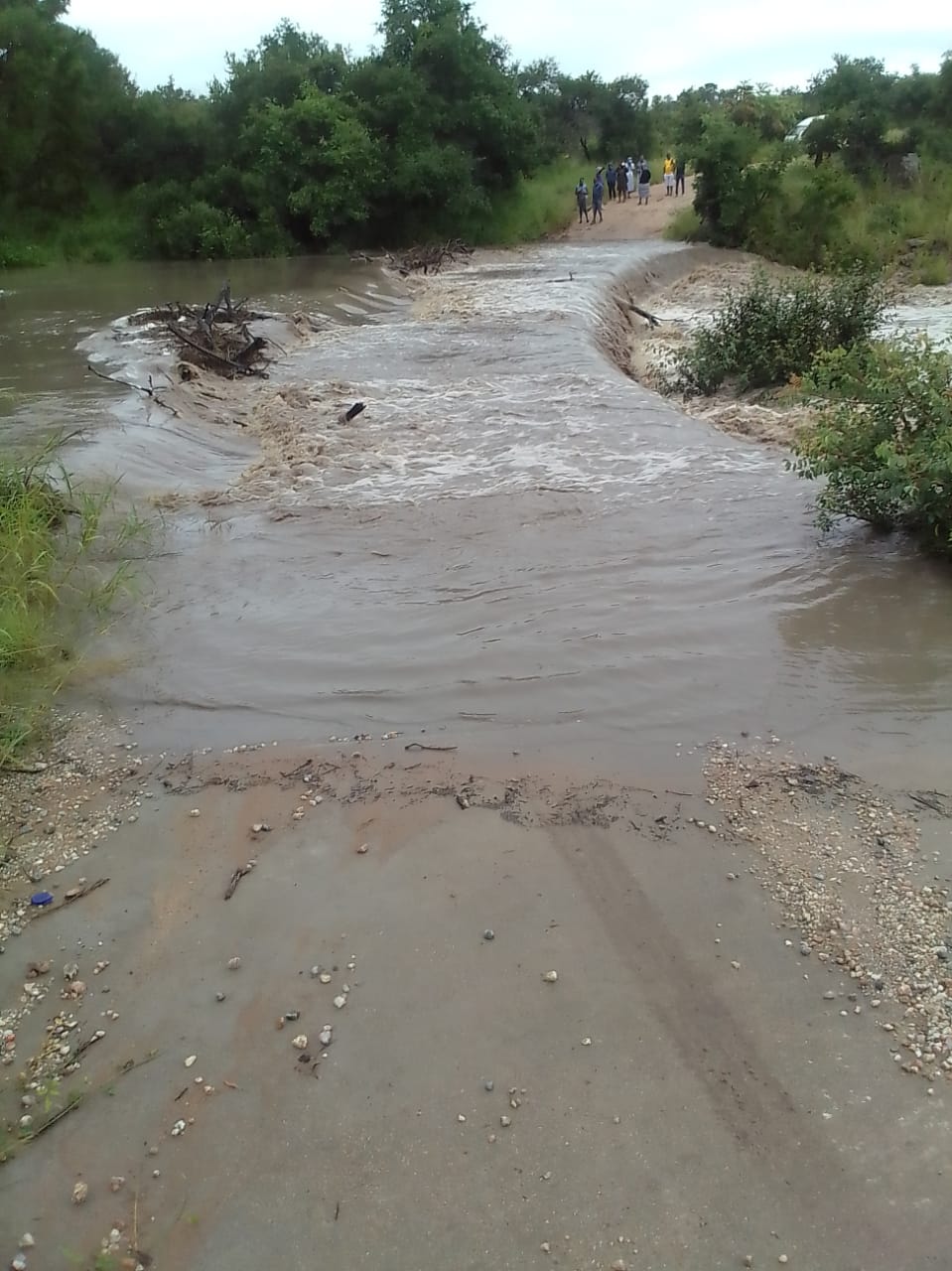
Talamati Feb 6. Image: SANParks
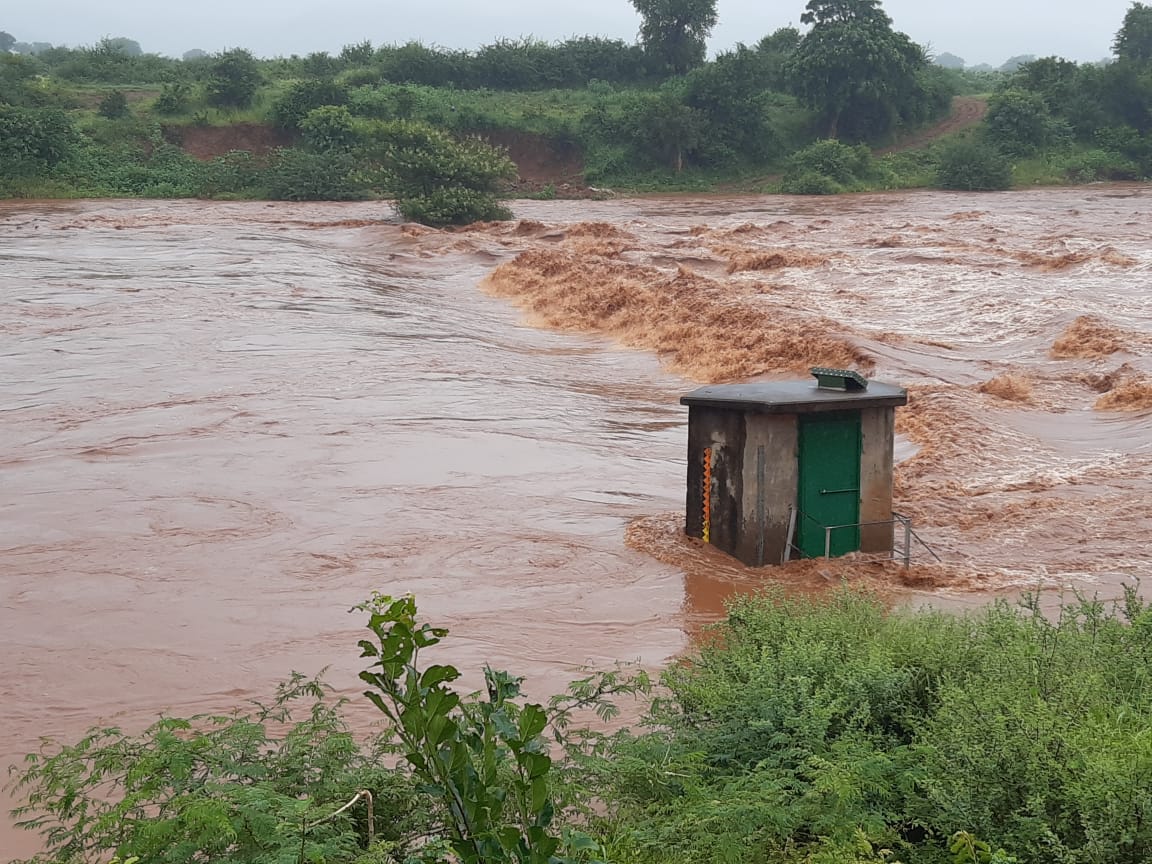
Luvuvhu in flood close to Punda Maria. Feb 2 Image: SANParks
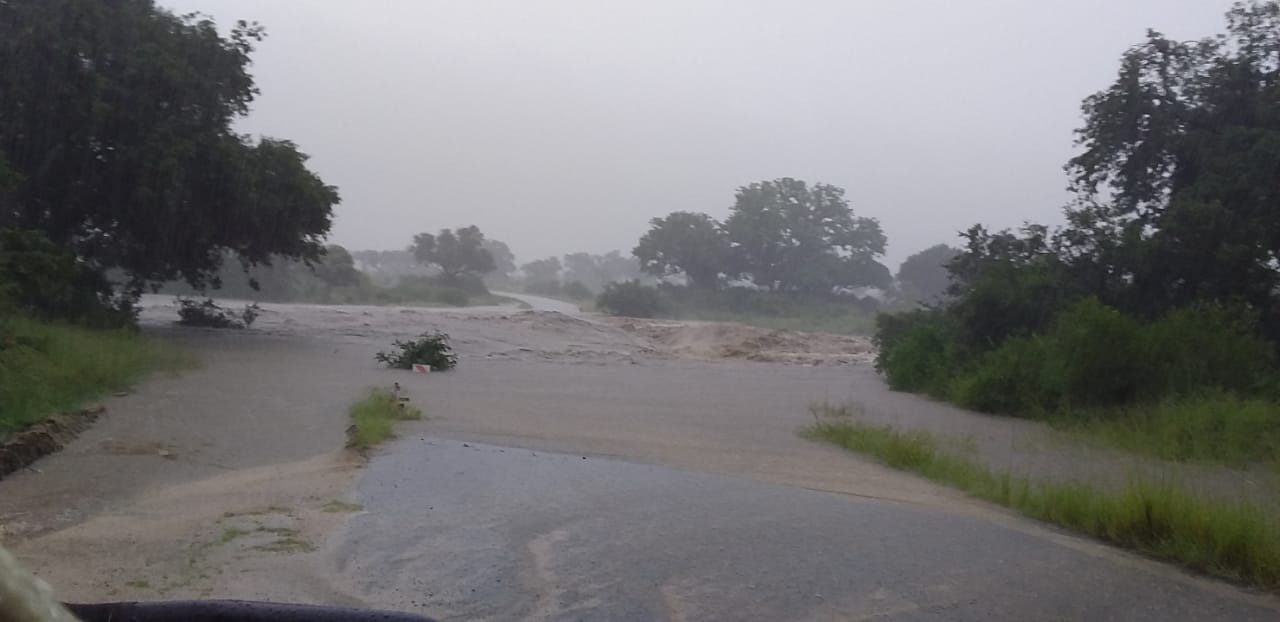
Phabeni bridge Jan 31. Image: SANParks
As the water continues to subside, assessments are being conducted to determine the extent of structural damage, says Phaahla.
Many Krugerholics were concerned about the well-being of the park’s wildlife following the storm as well as with the ongoing heavy rains after it passed. Animals instinctively move to higher grounds before a storm arrives and Phaahla said that no animals needed to be rescued.
‘Animals instinctively move to higher ground even before the storm arrives. Nature normally takes care of itself, we have never had to rescue any animals before but we do a regular flyover to observe infrastructure and should there be a need to assist animals in distress, we will do so,’ he said.
Surrounding areas of the Kruger National Park benefitted from the heavy rains, with dry river beds flowing once again. Zandspruit River, situated in Hoedspruit in Limpopo was one such river.
View this post on Instagram
Graskop received 160mm of rain overnight between January 24-25, causing the Lisbon and Berlin Falls to gush. Two weeks later and the falls are still flowing in full force.
View this post on Instagram
View this post on Instagram
Picture: SANParks

